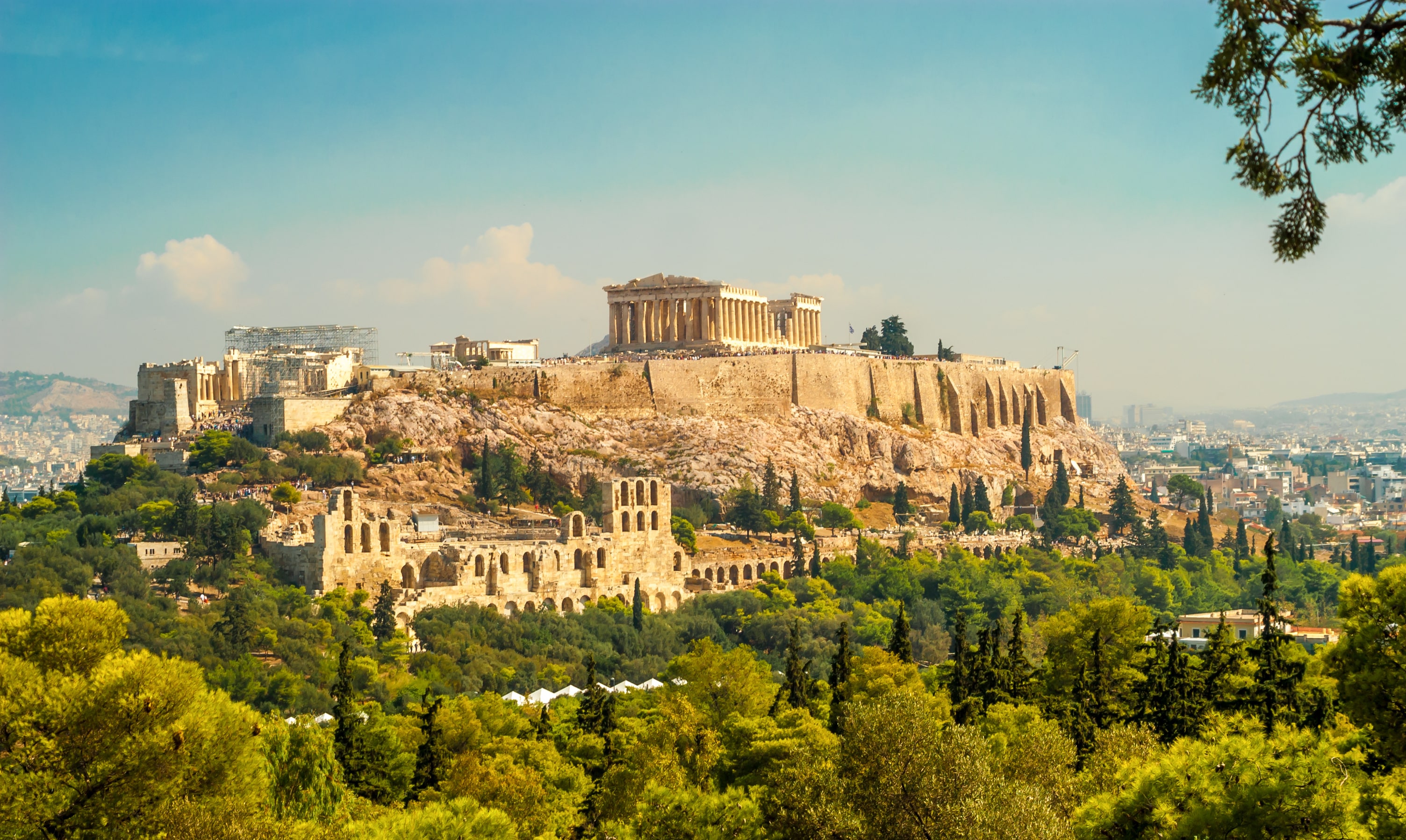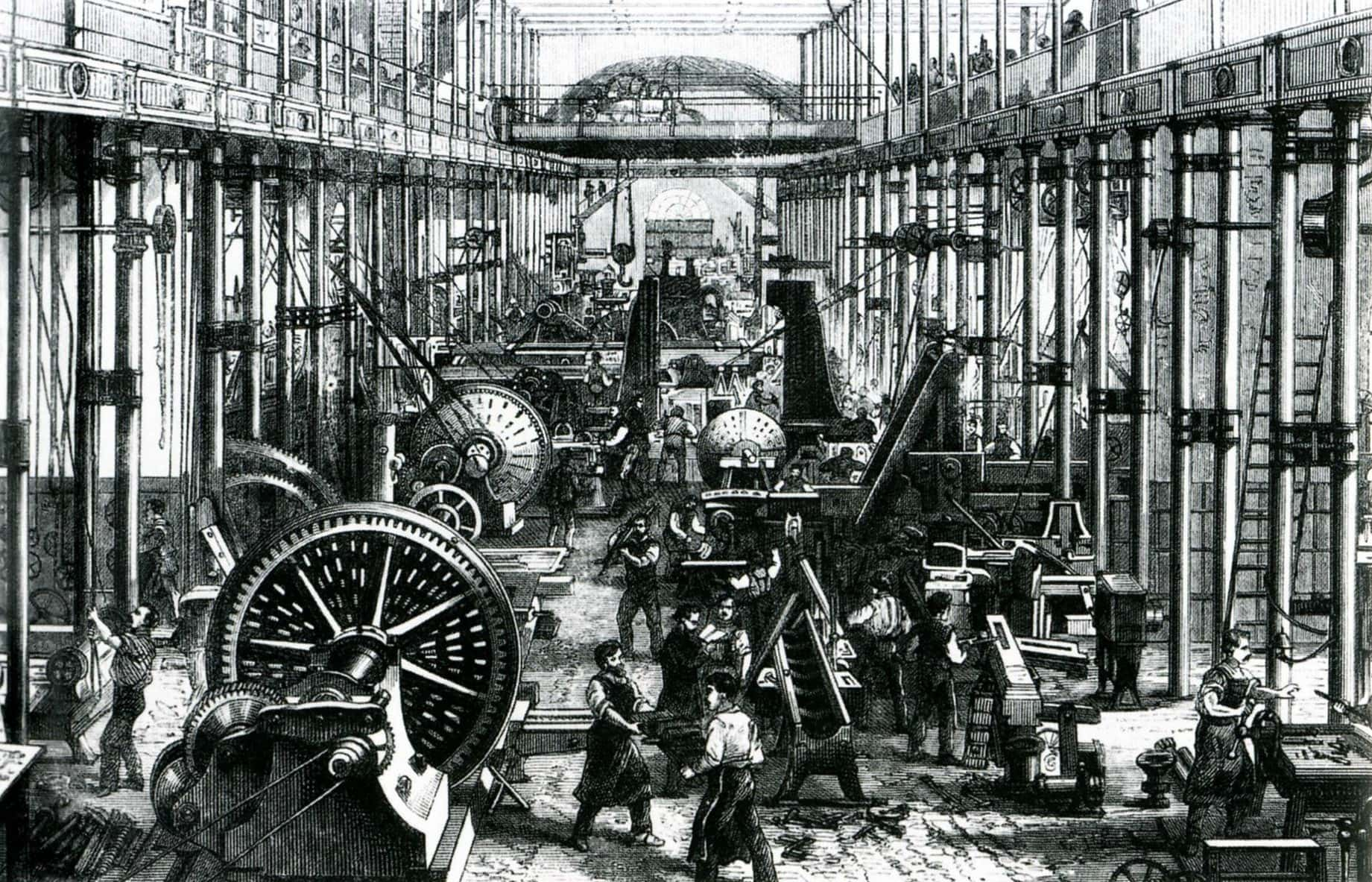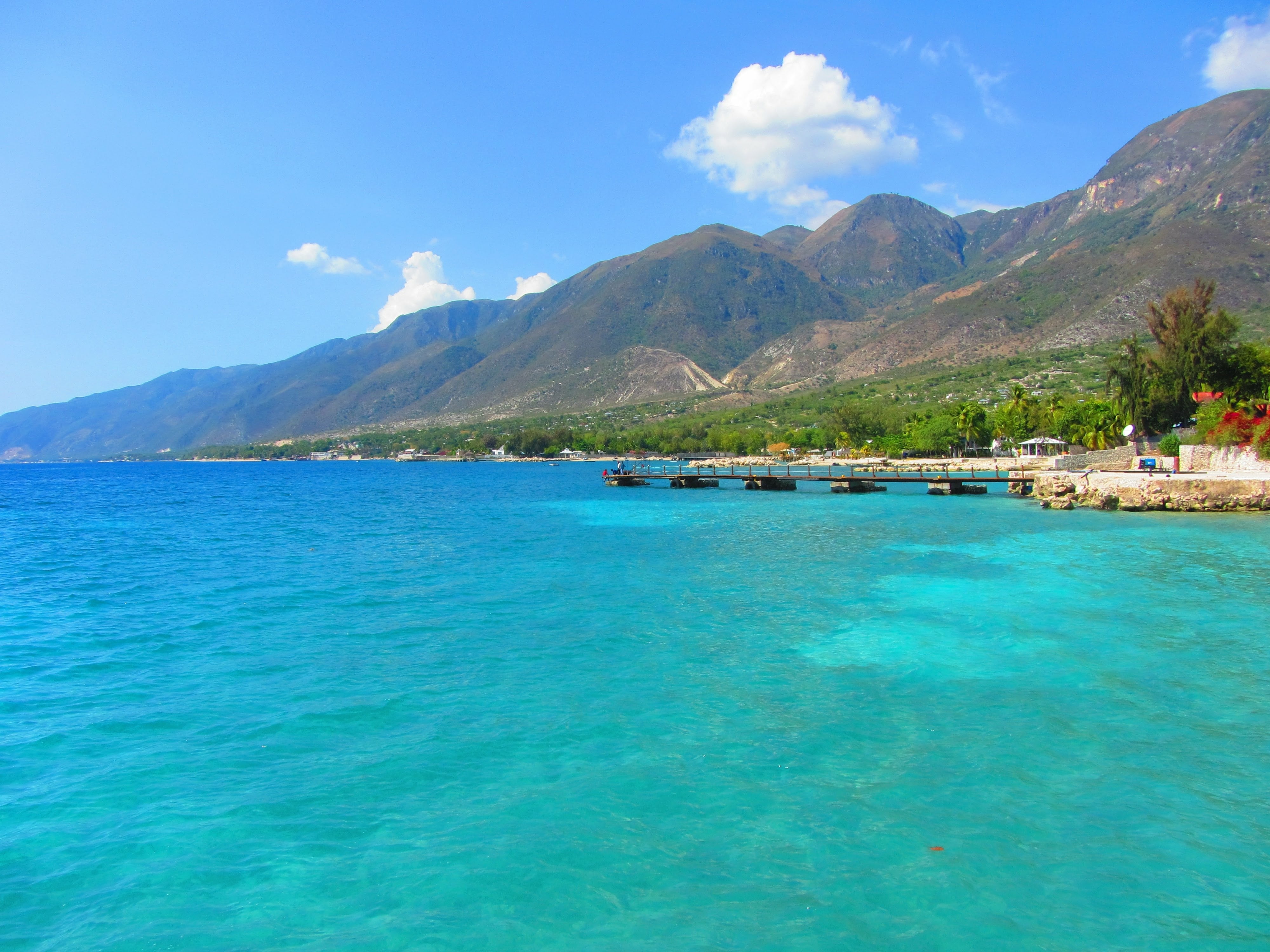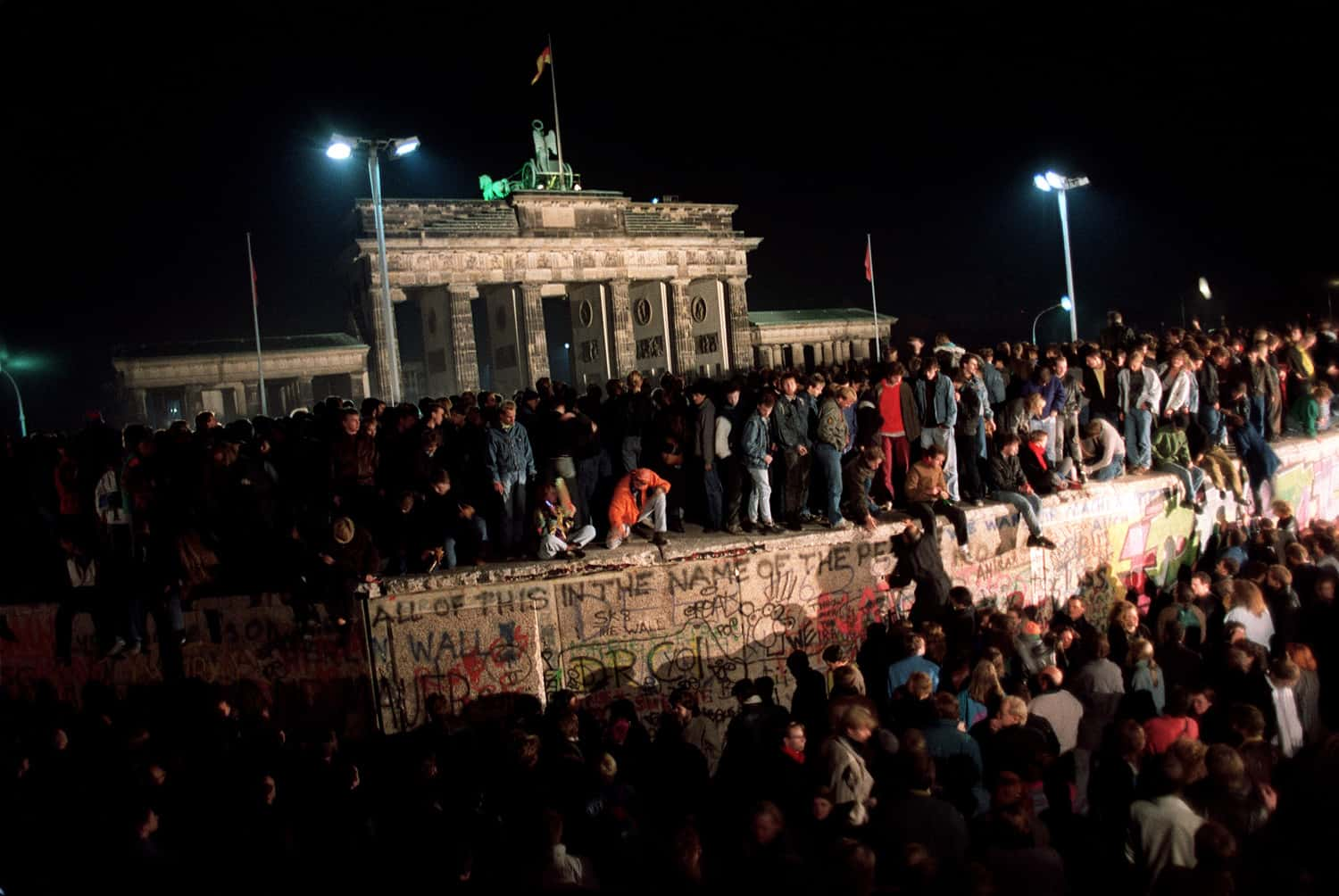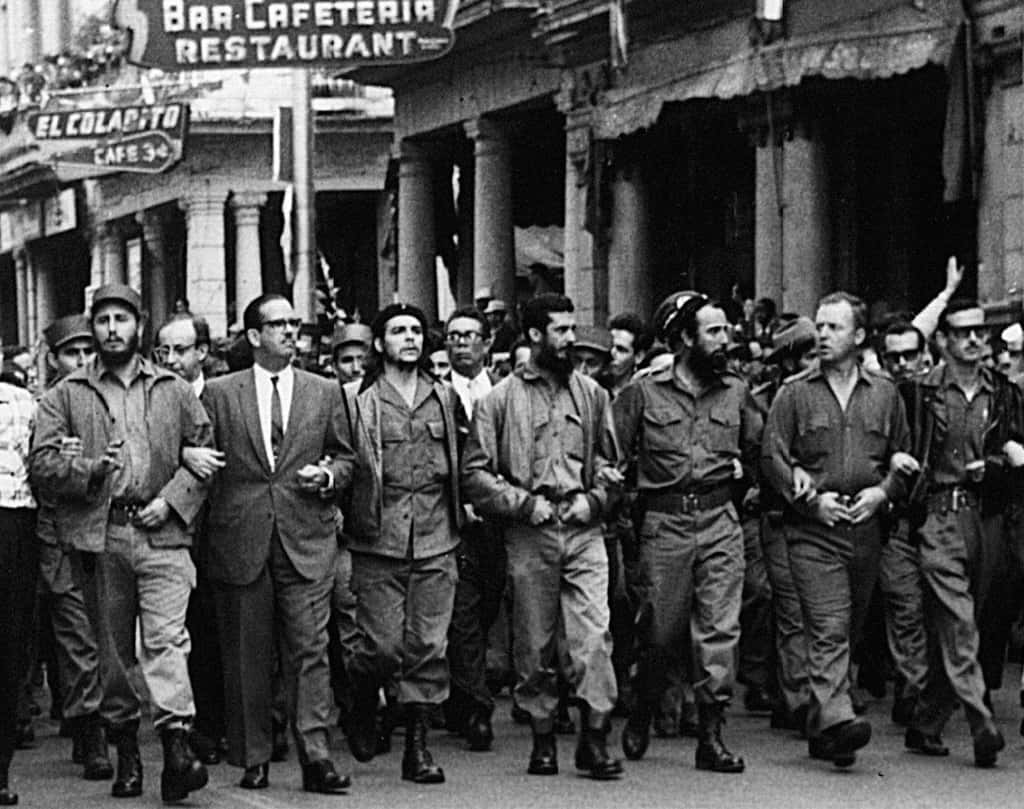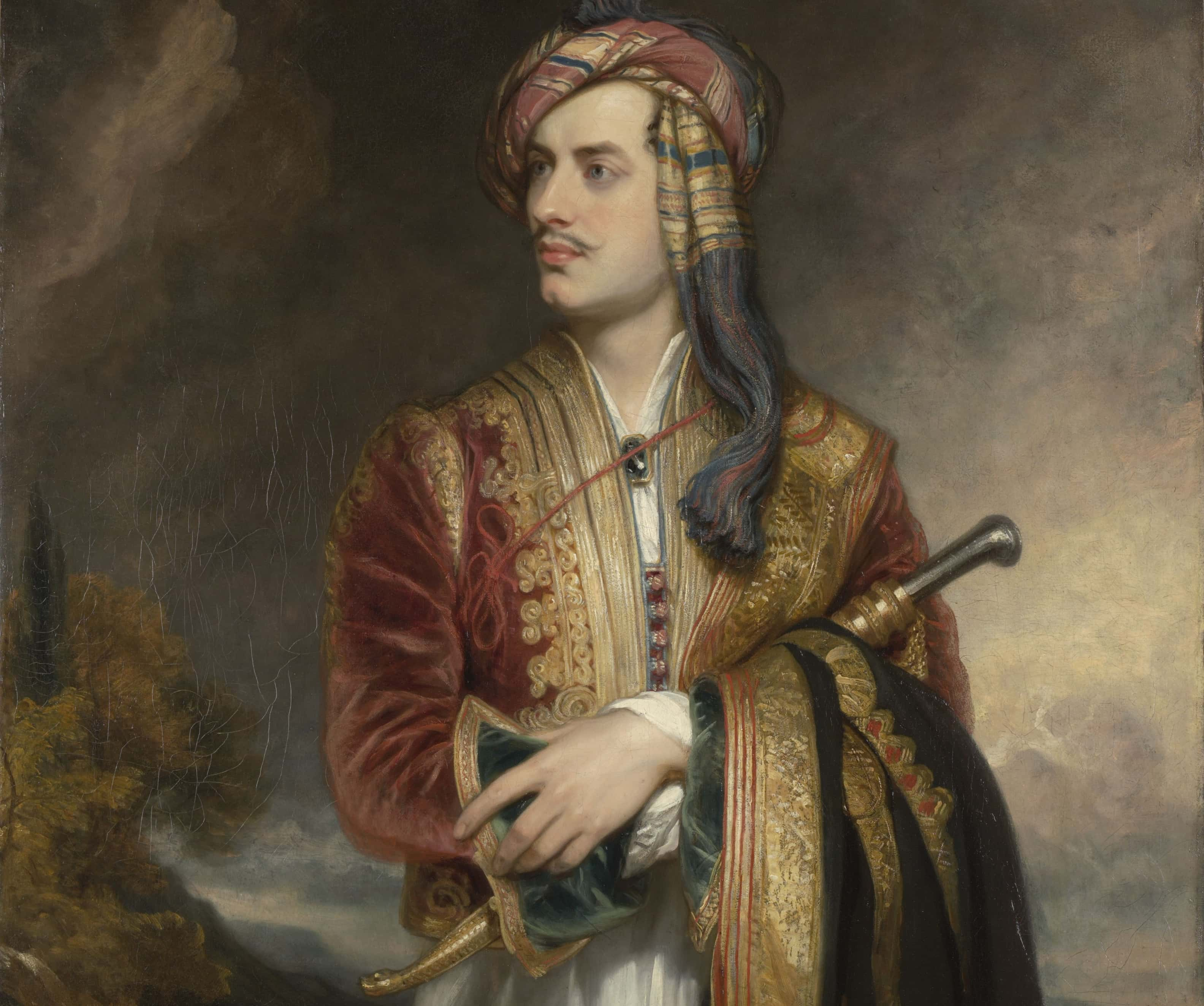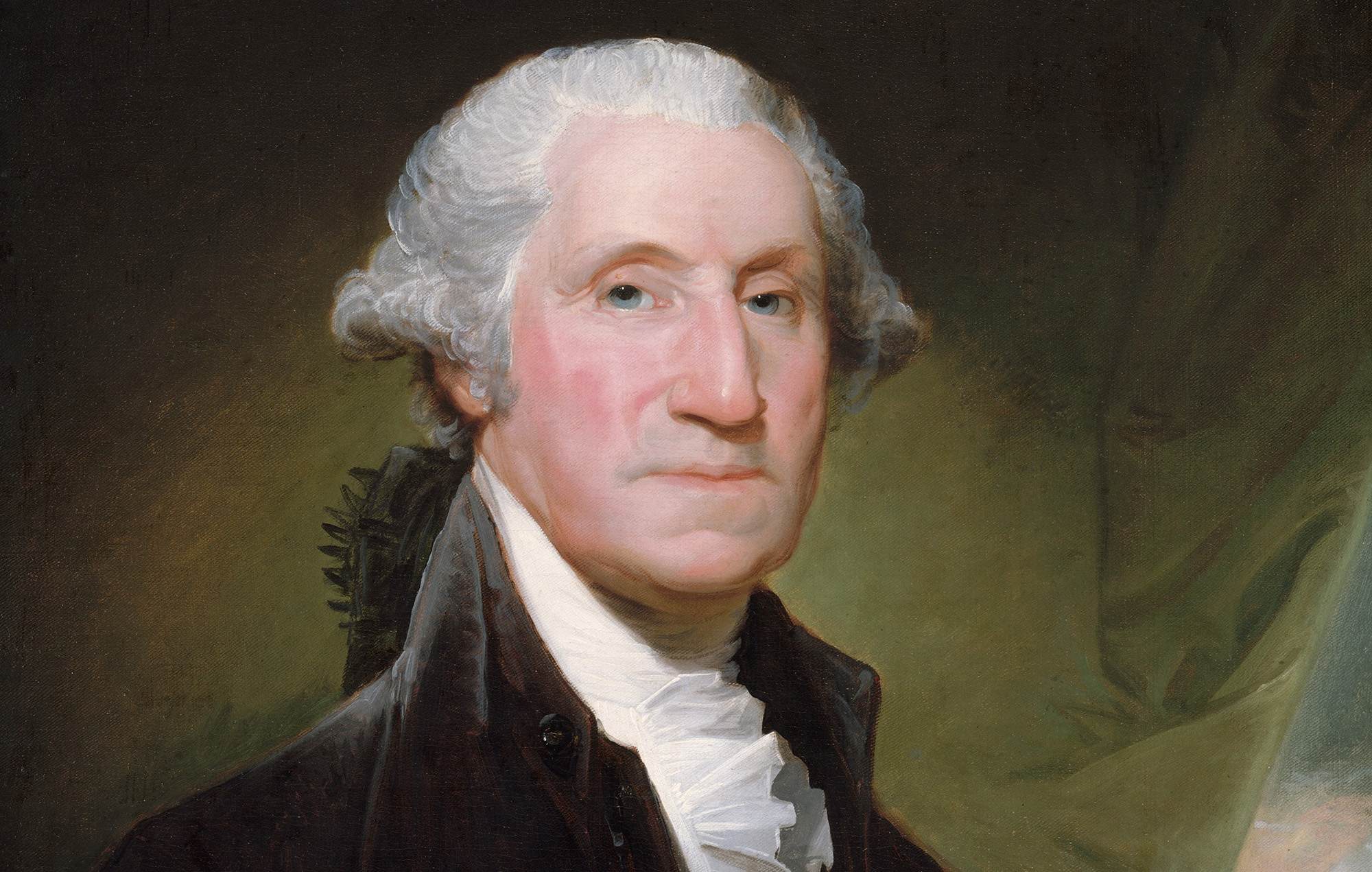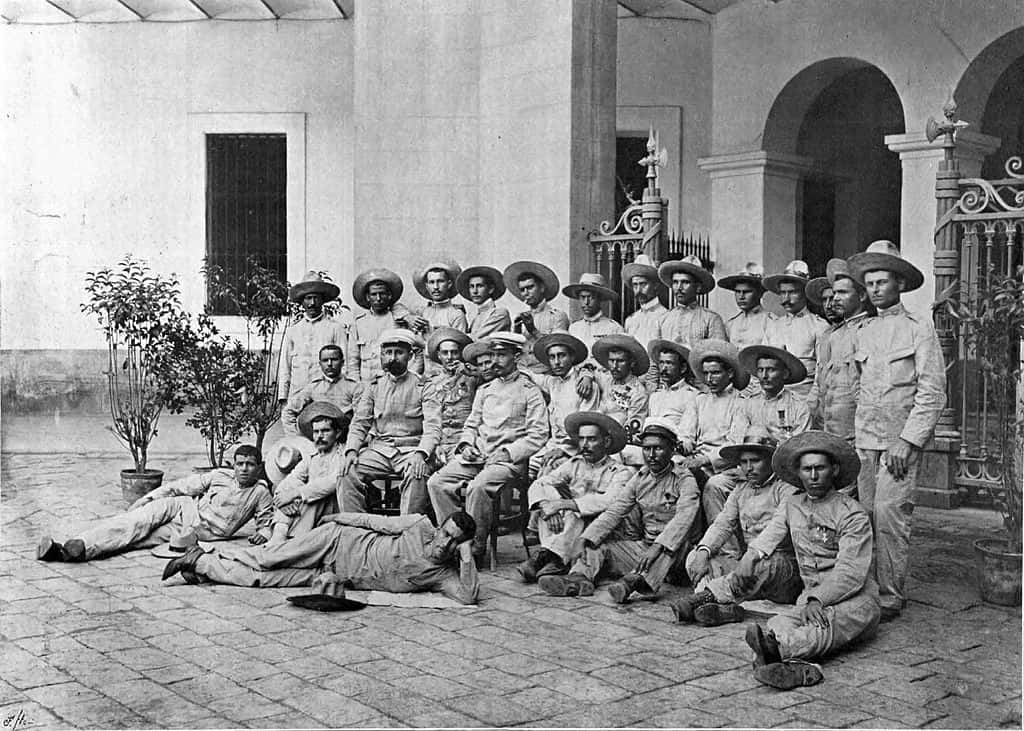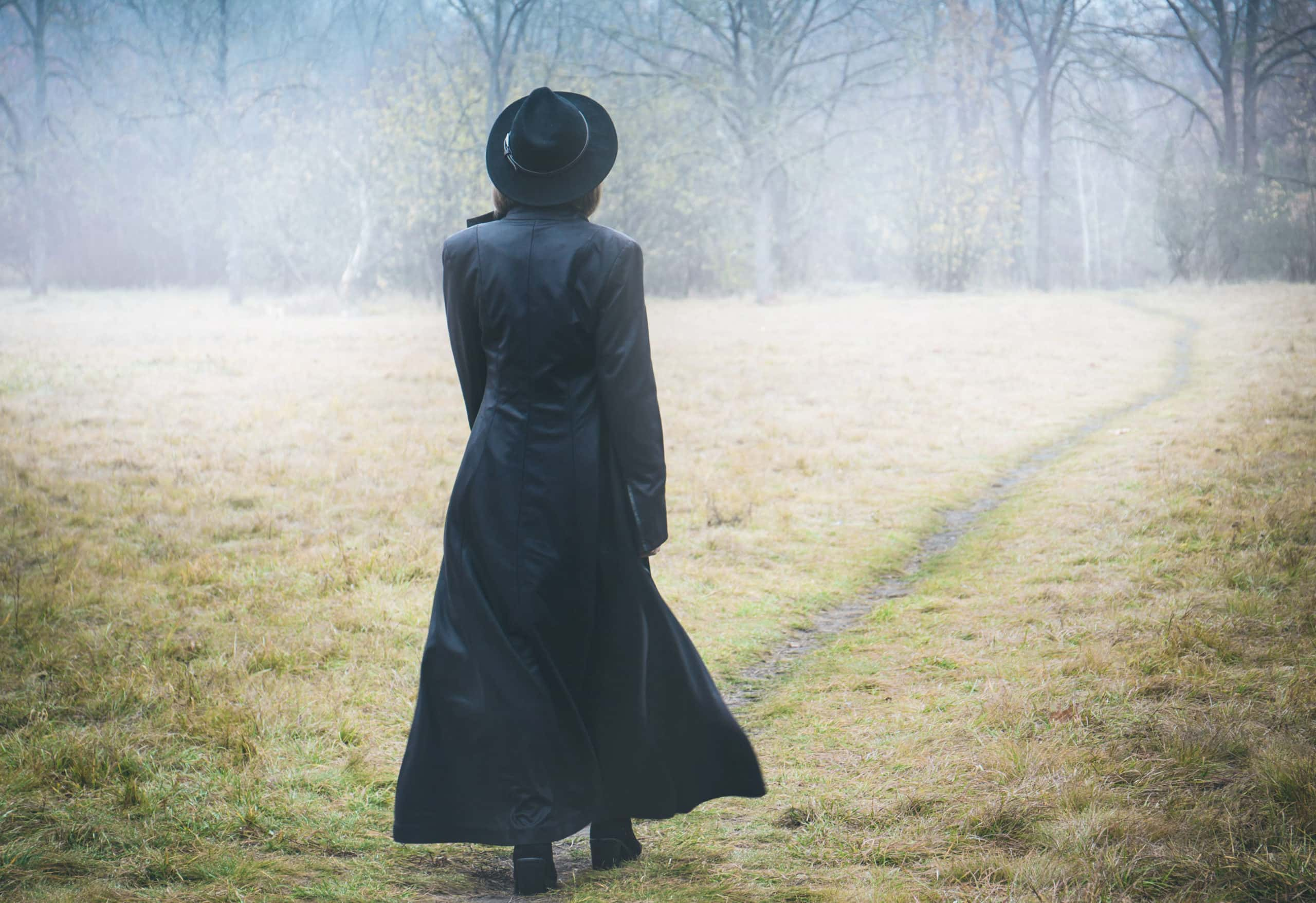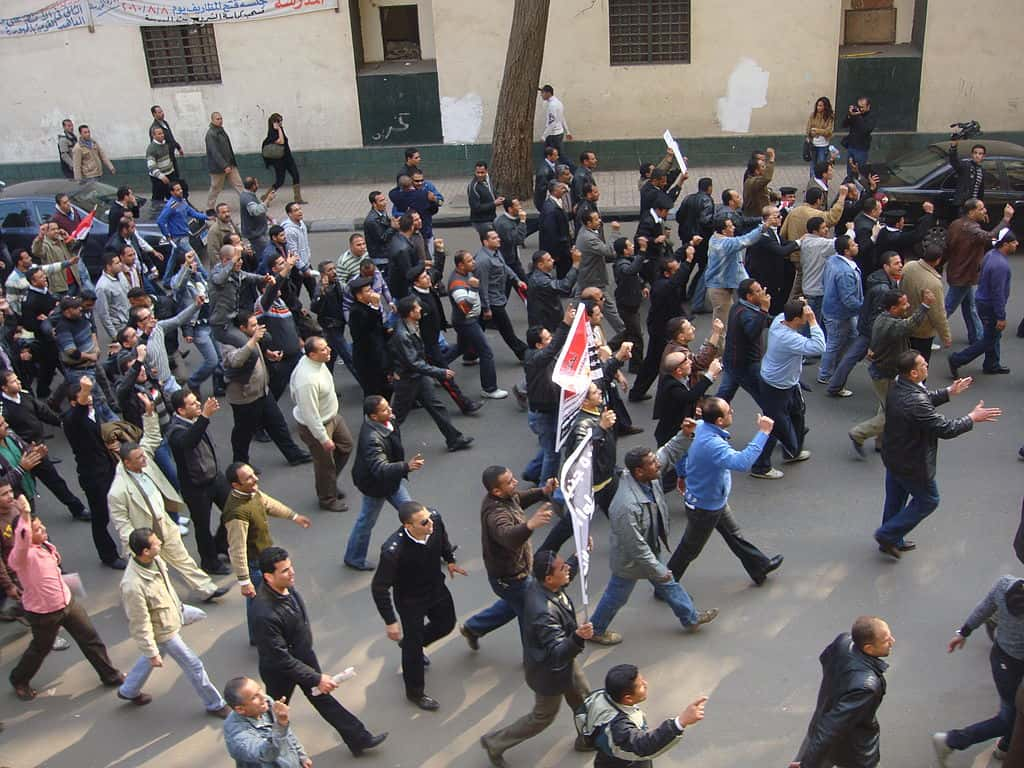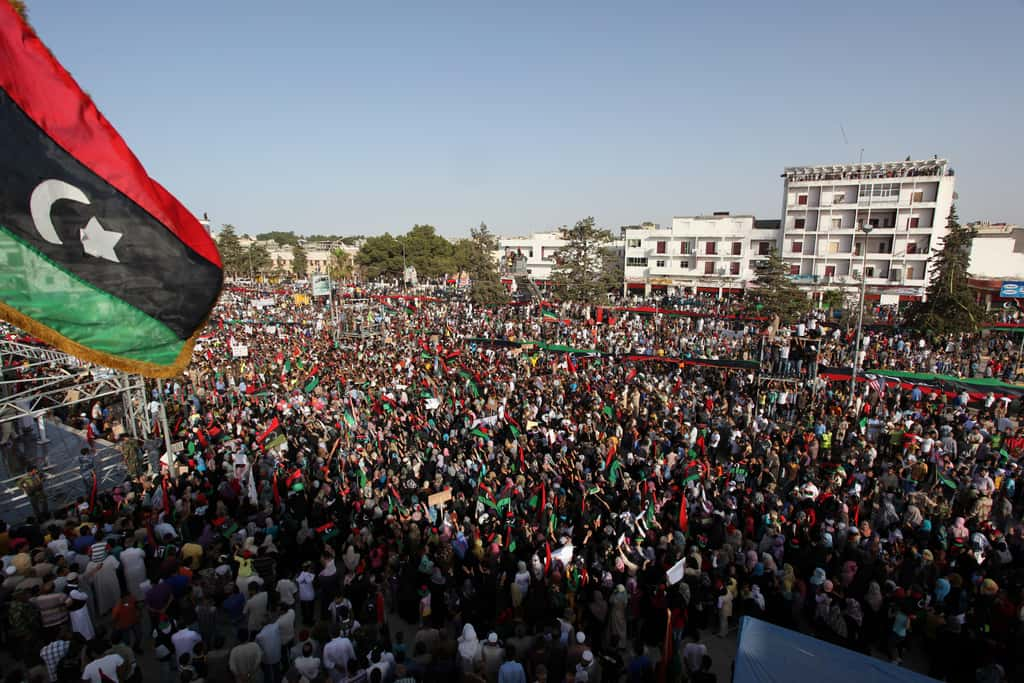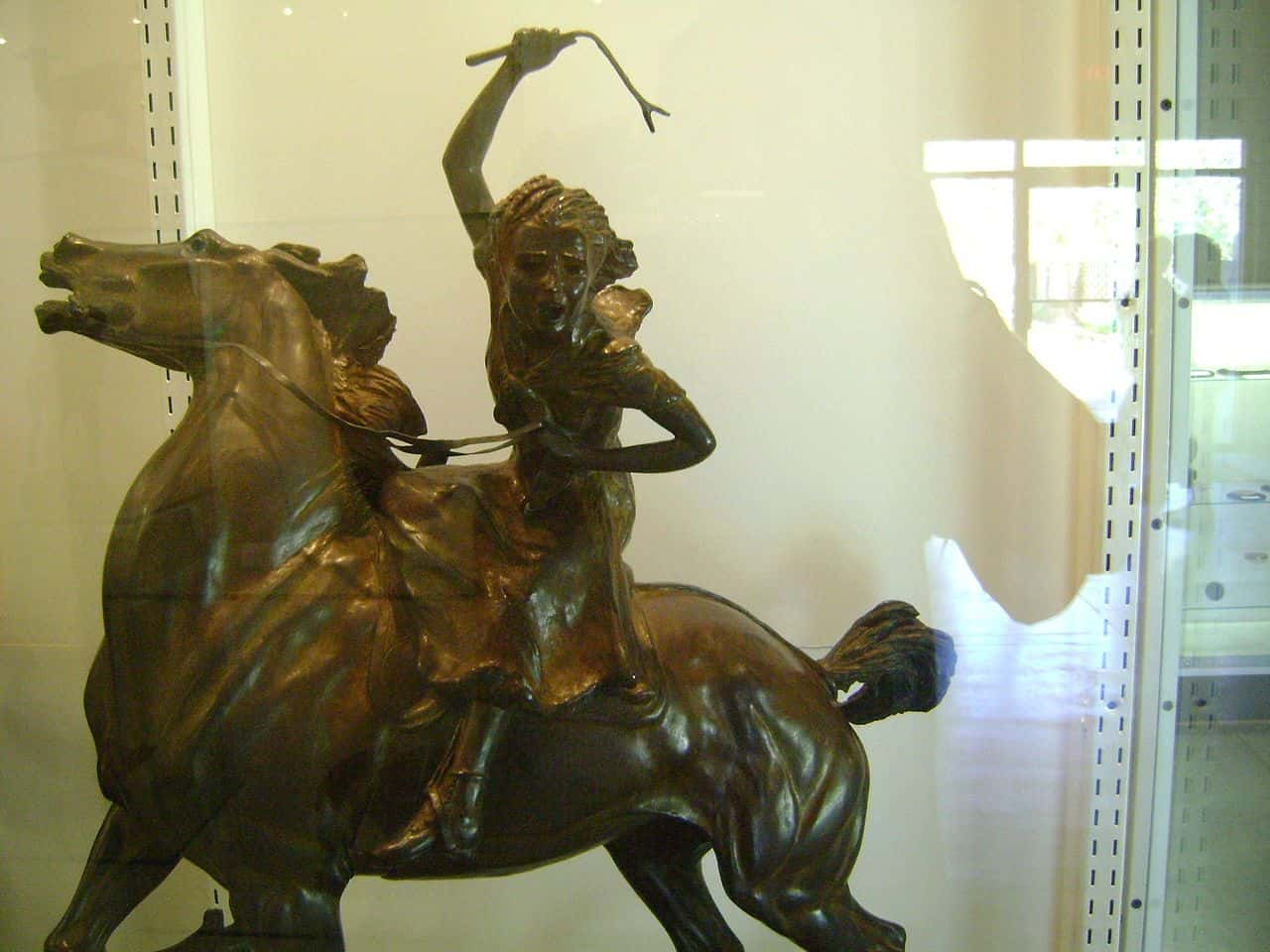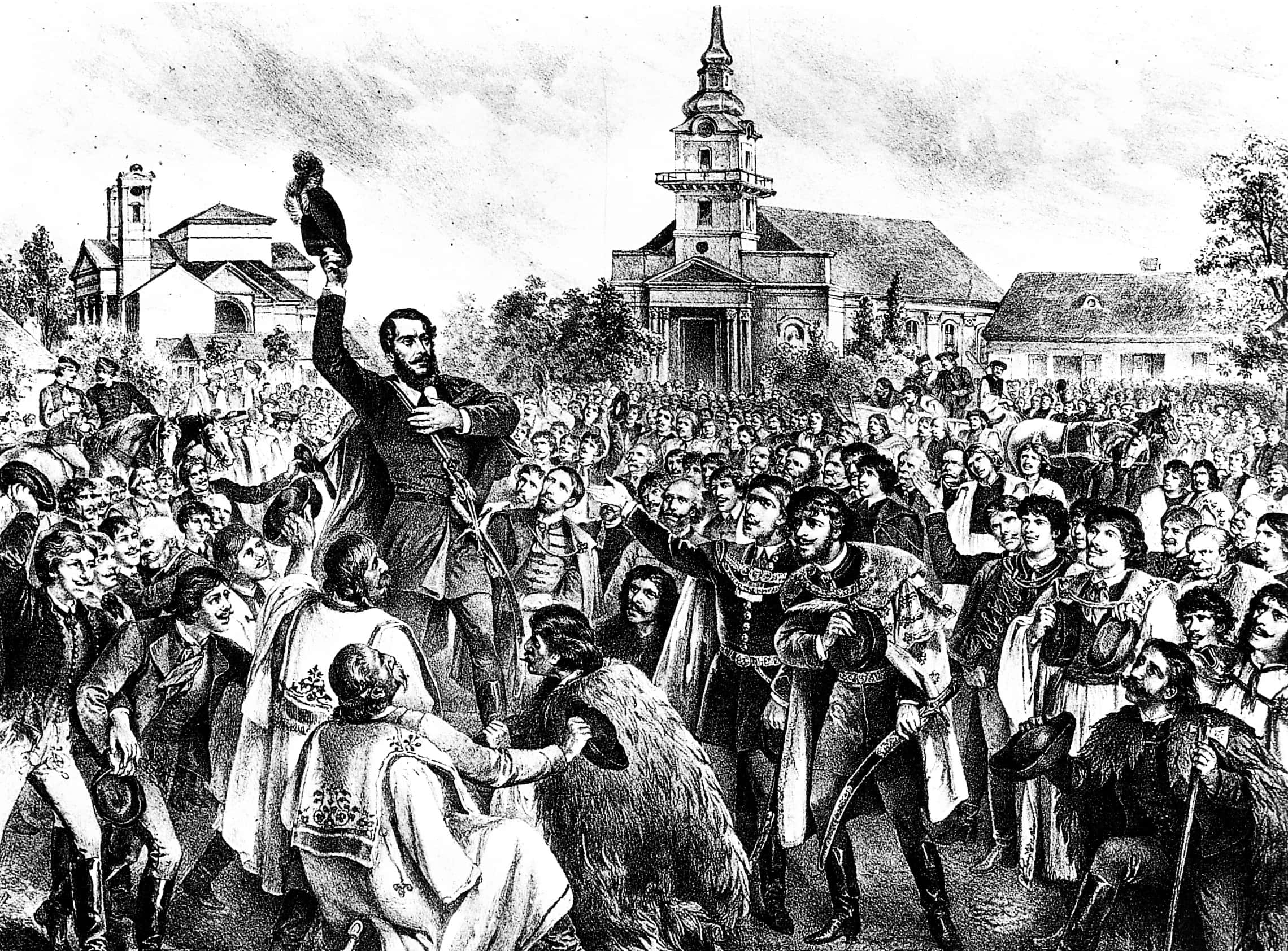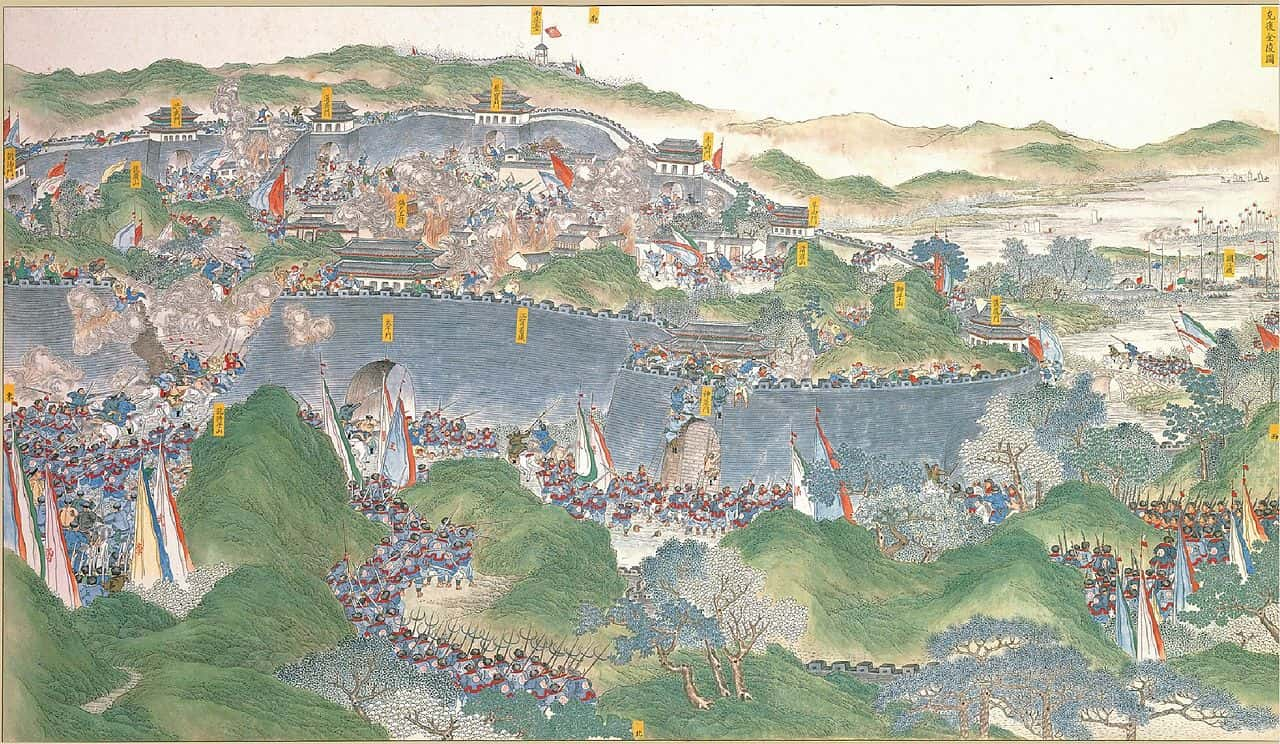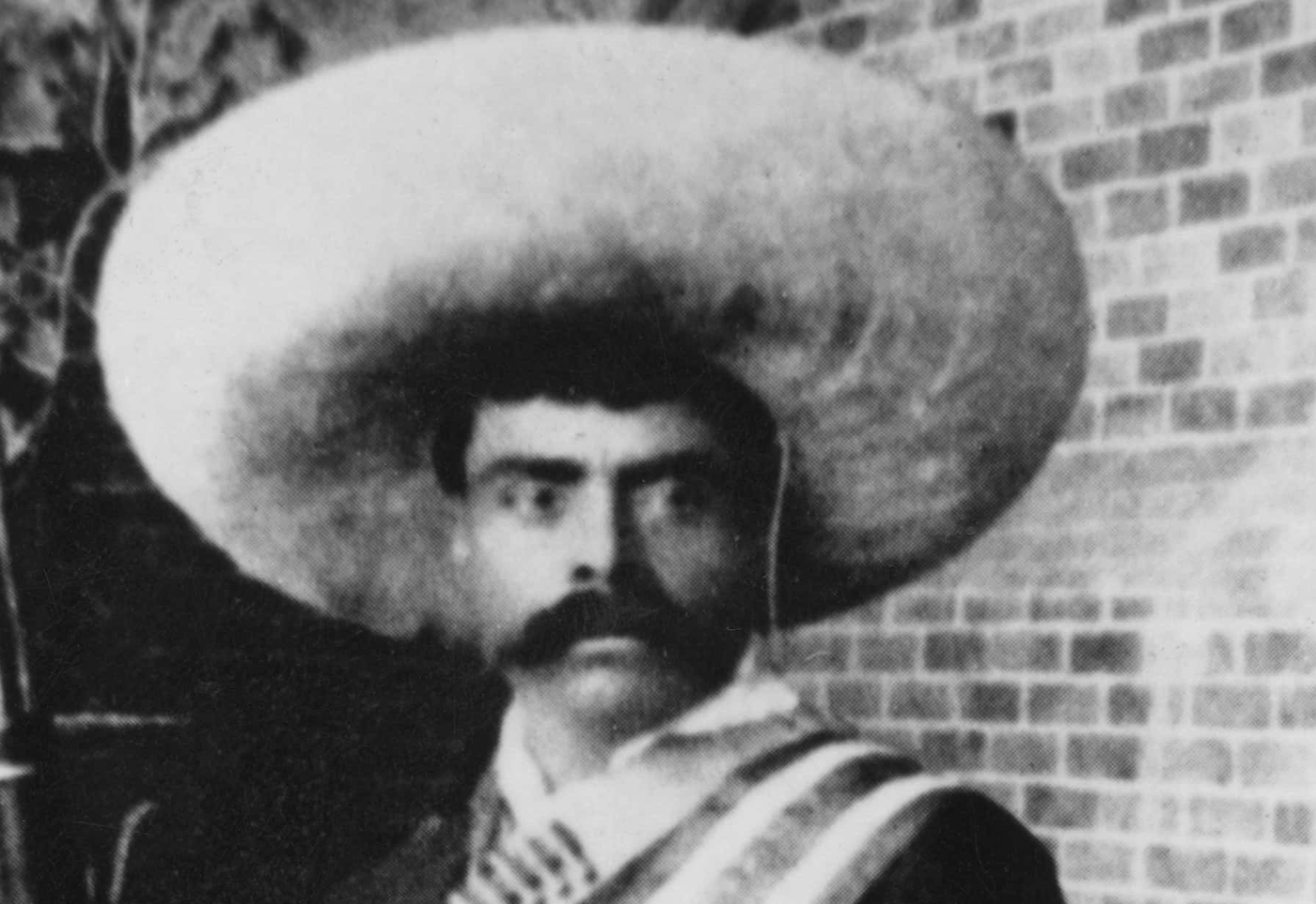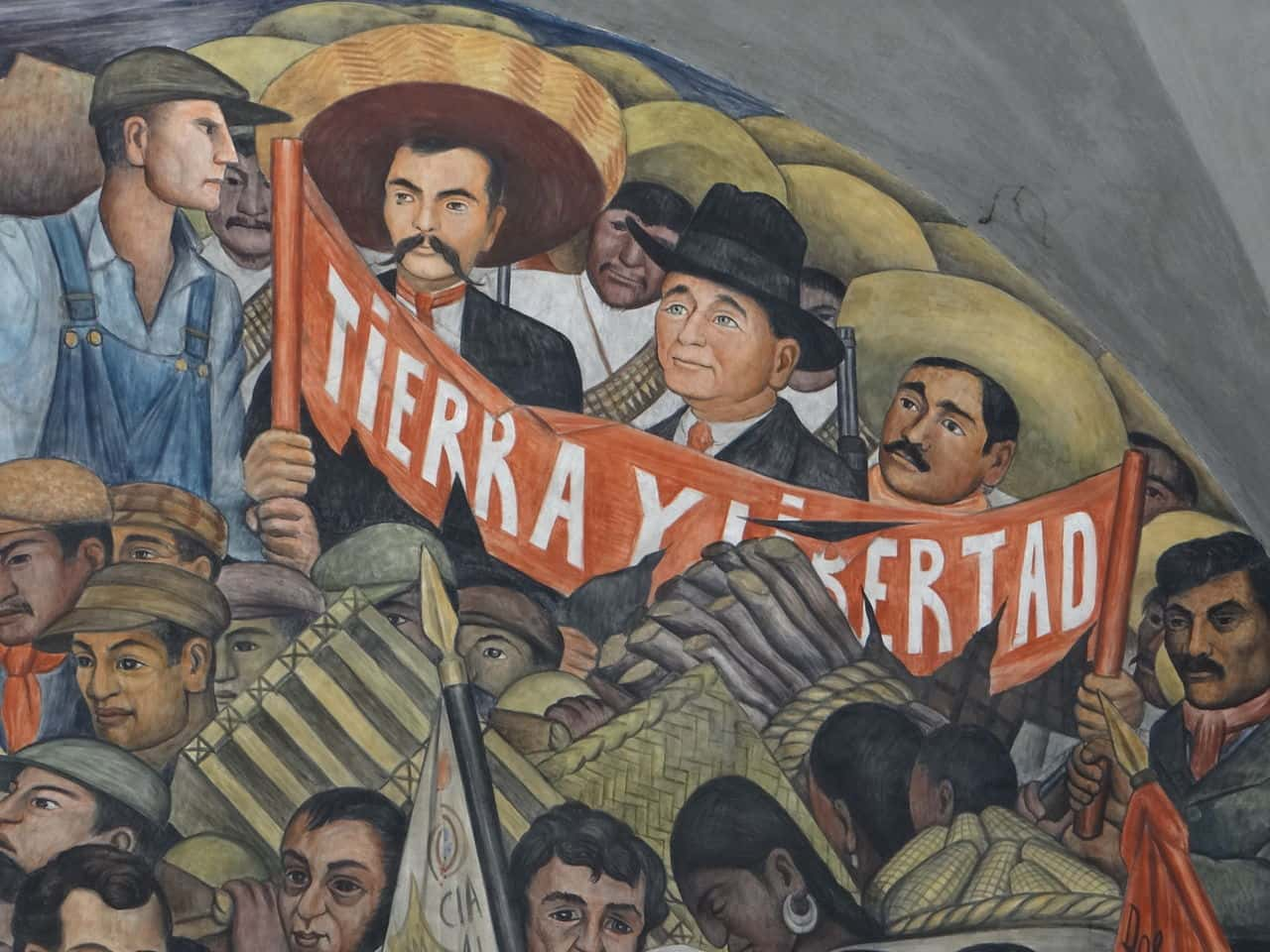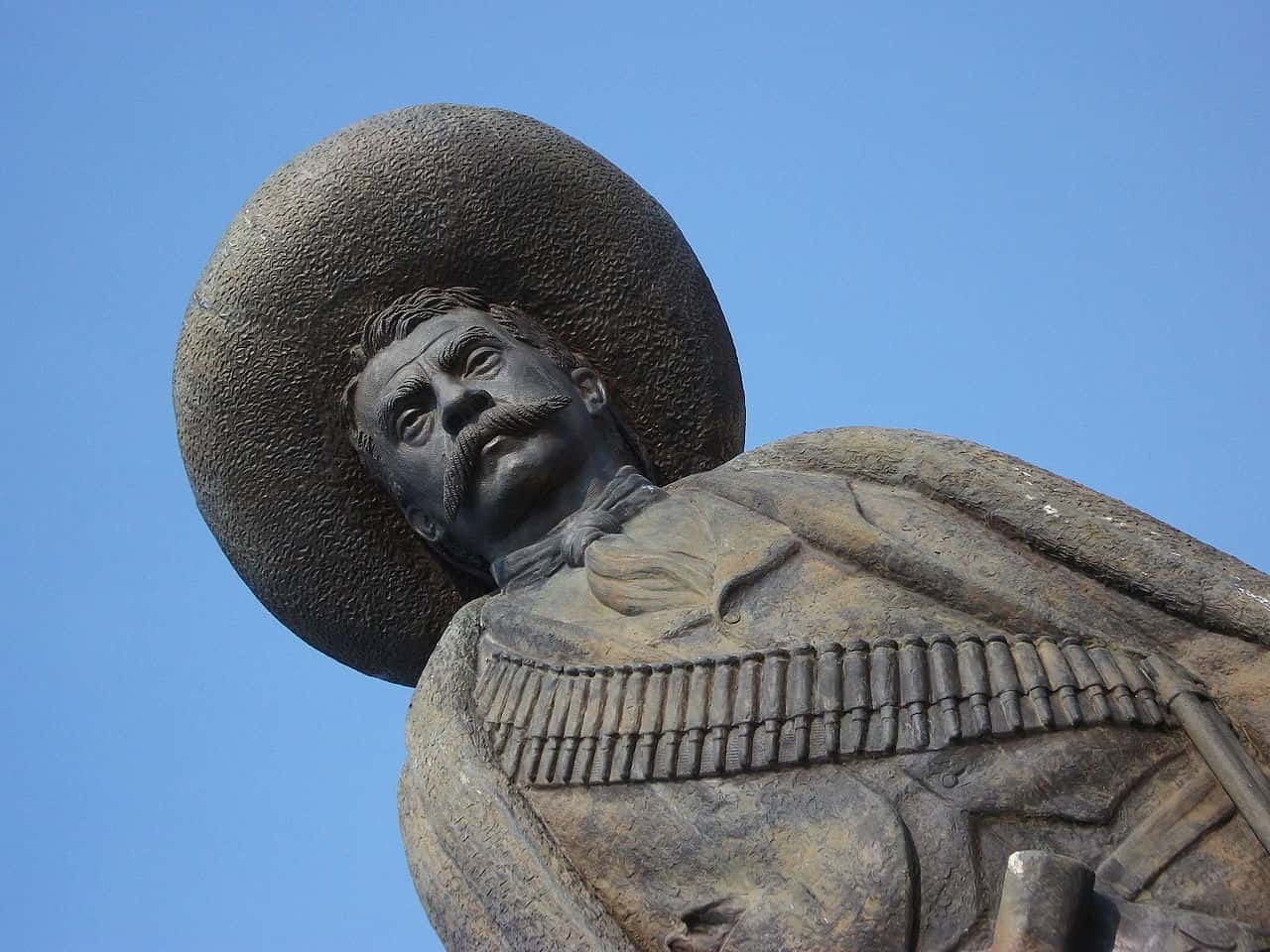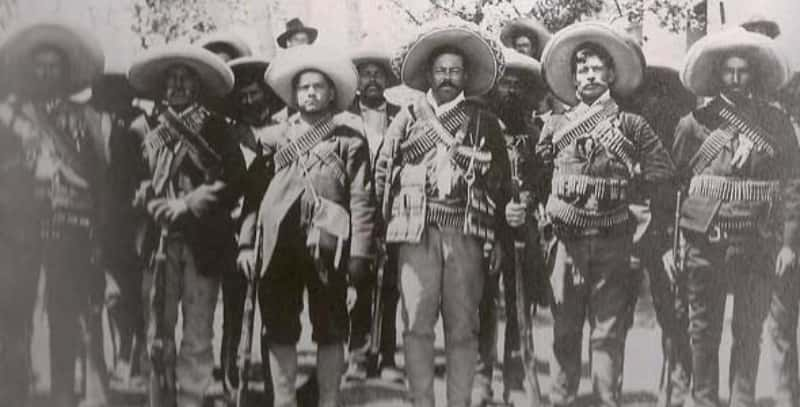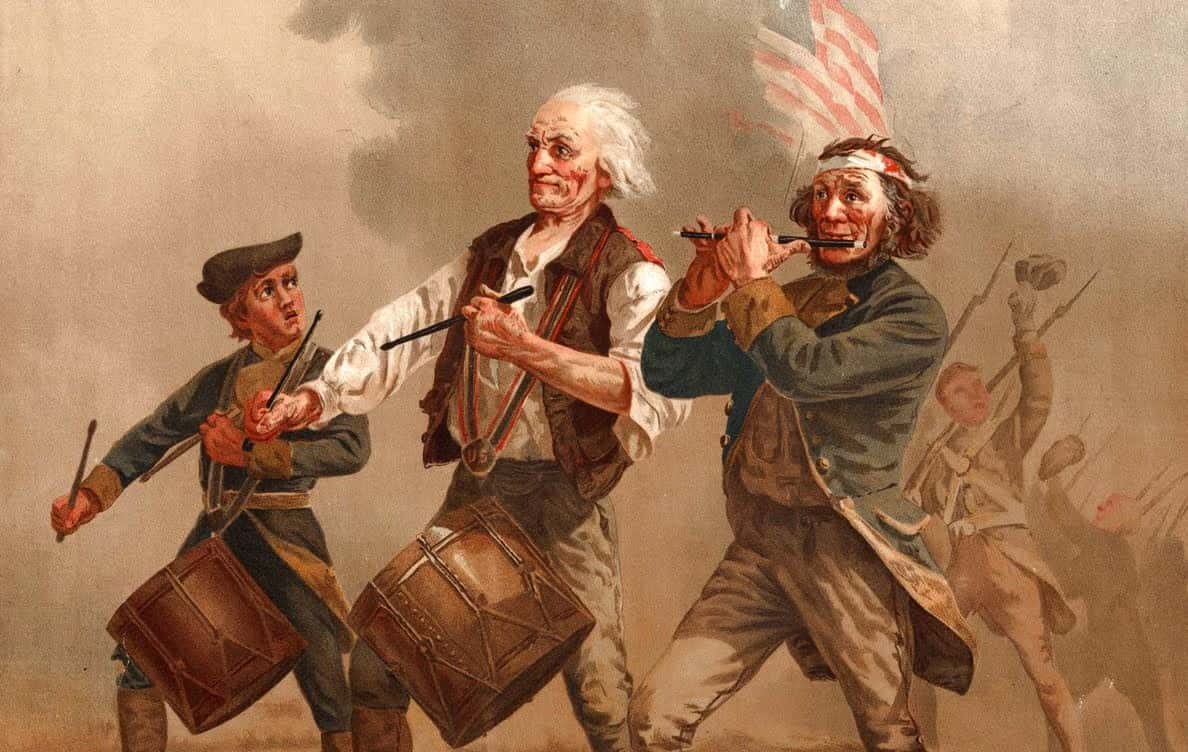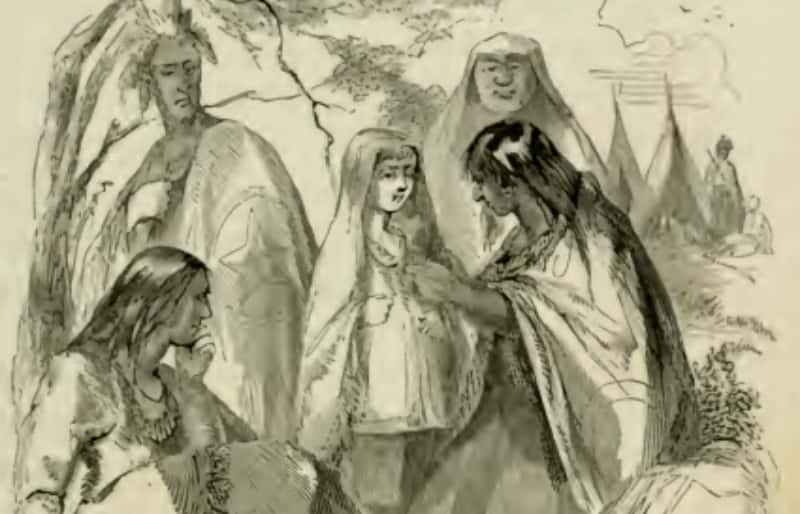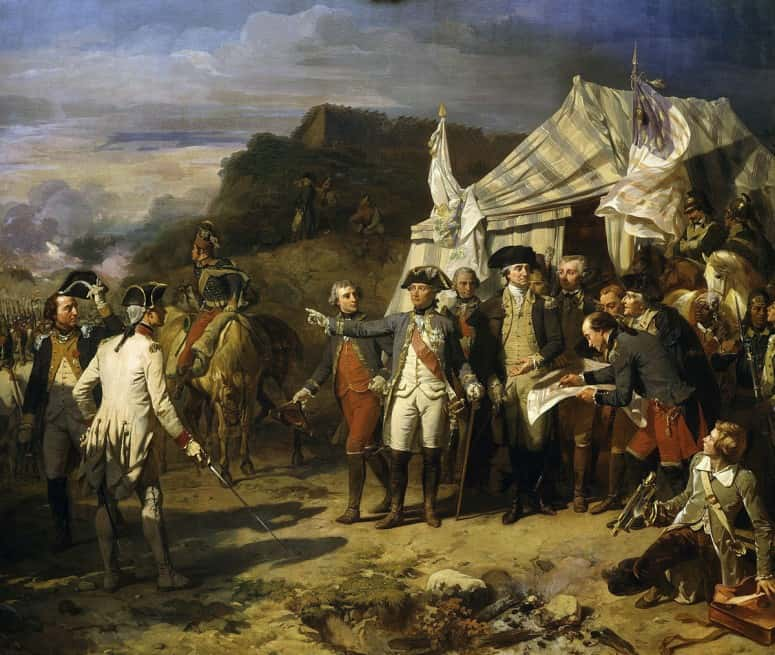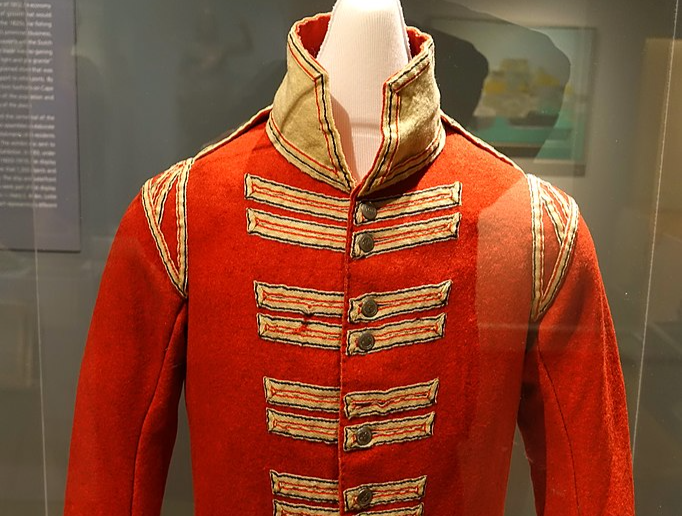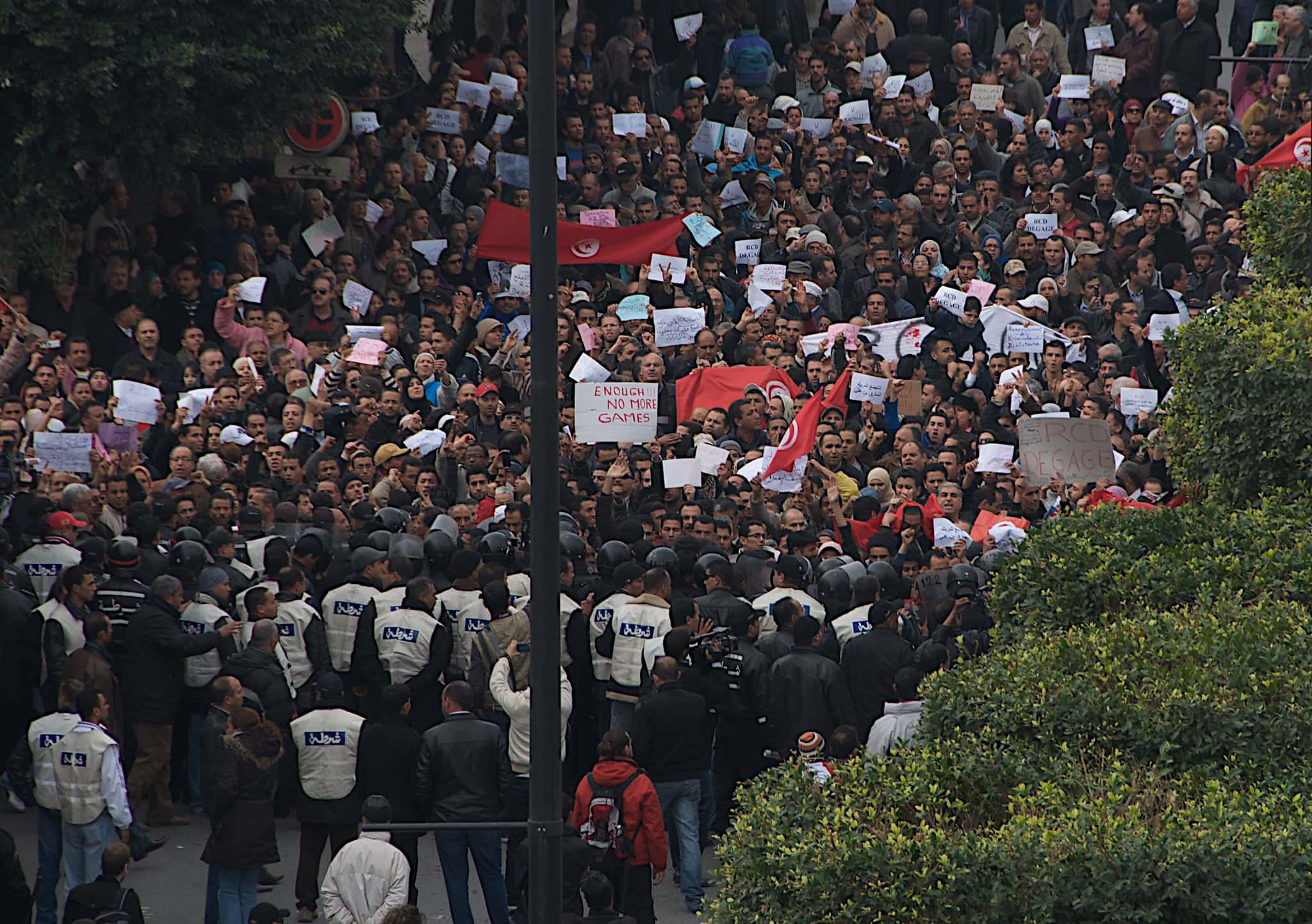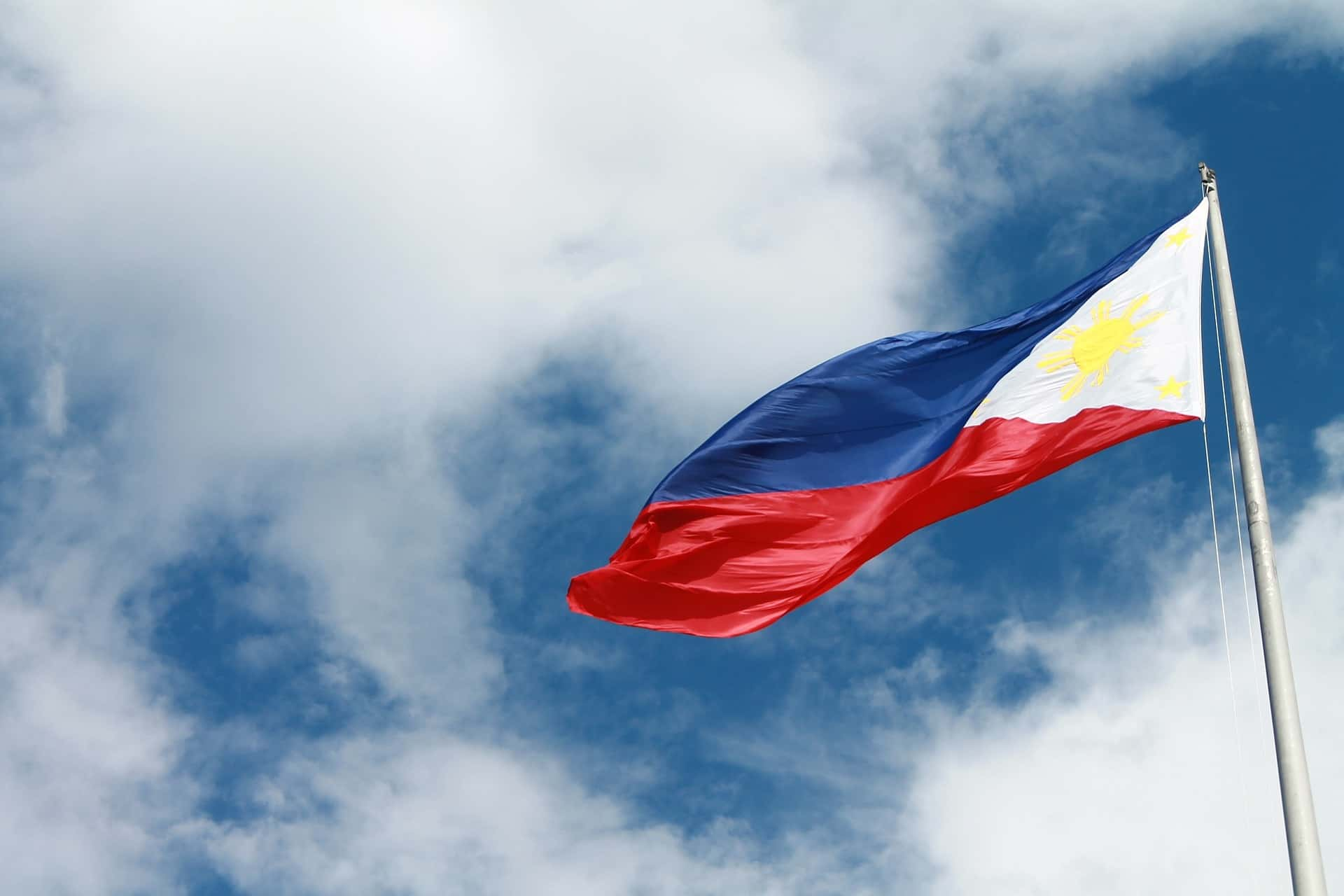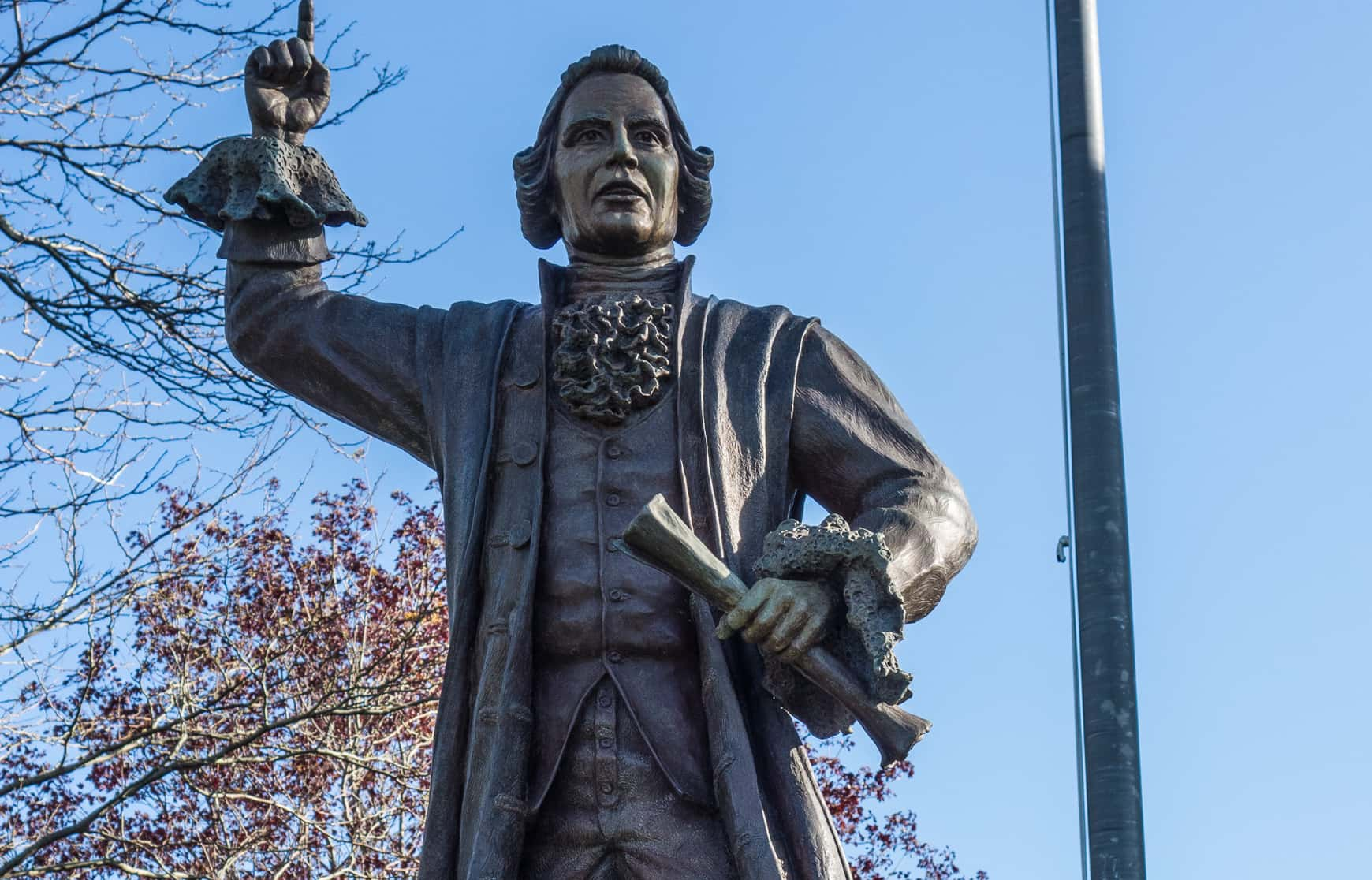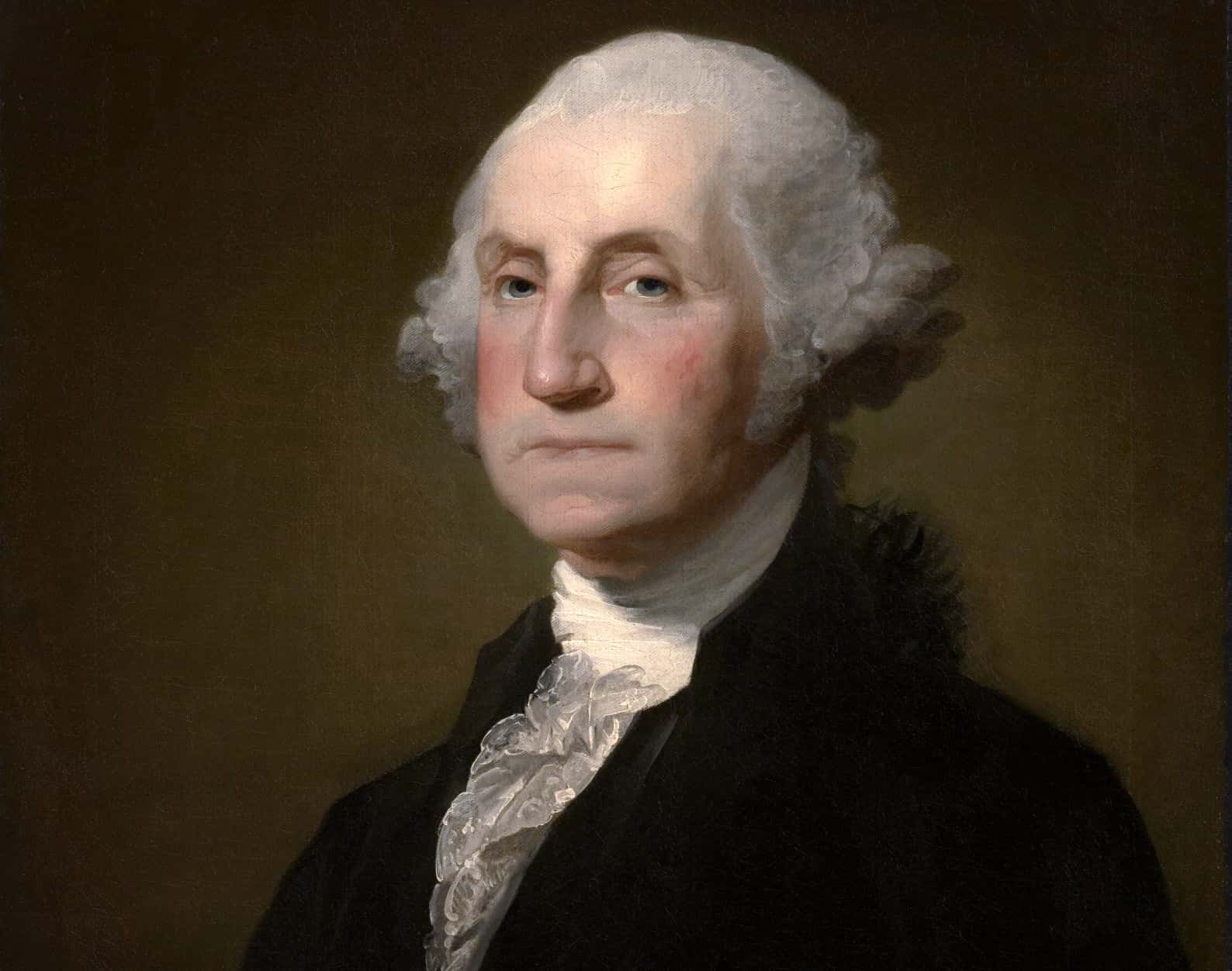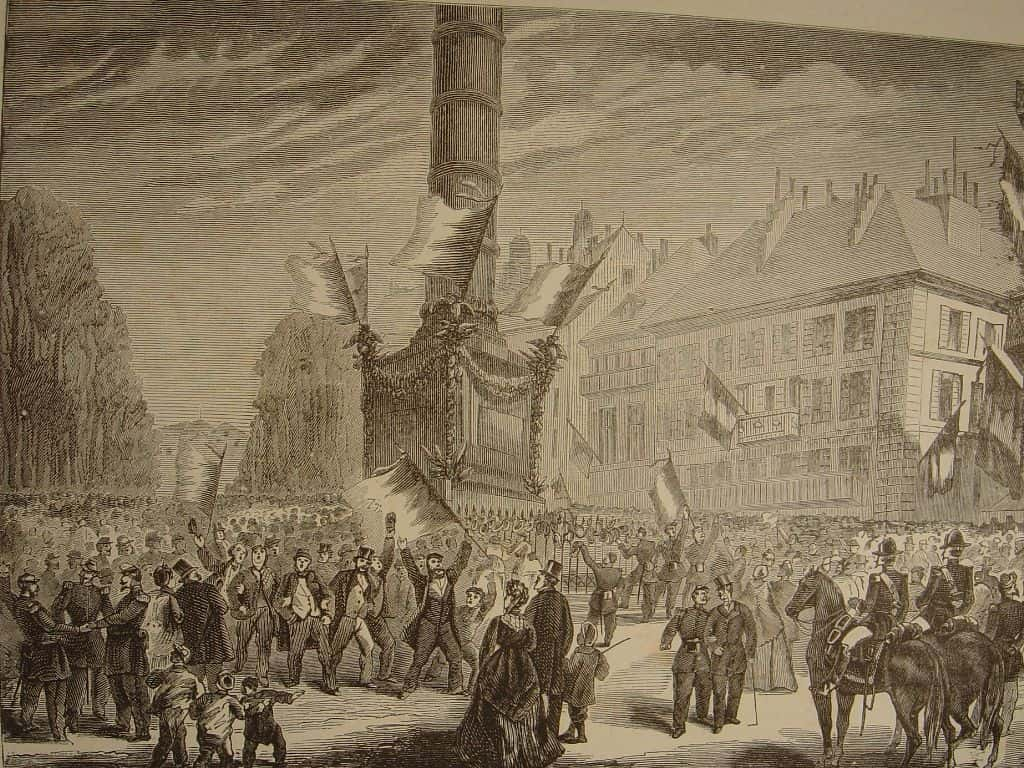Revolution is a part of life. The term itself means nothing more than “a rotation"—a fitting term for a phenomenon that's been shaping world history since time immemorial.
Revolutions take place over time as systems of power pervert the social order. If history has taught us anything, it's that the misuse of power is hardly uncommon. Such systemic abuses can endure unchecked for decades... but when the discontent of the people reaches a breaking point, a revolution becomes inevitable. And whether they're violent or peaceful, the power of revolution seems as fundamental to human life as the rotation of the Earth.
Here are 40 revelatory facts about revolutions from history.
40. Going Commando
French revolutionaries were known as the "sans-culottes". The literal translation? Without underpants. That's not to say that they were going commando, though. It's just that the nobility tended to wear silk short pants called culottes (classic aristocrats, right)? In contrast, the revolutionaries wore long, tight pants to identify themselves.
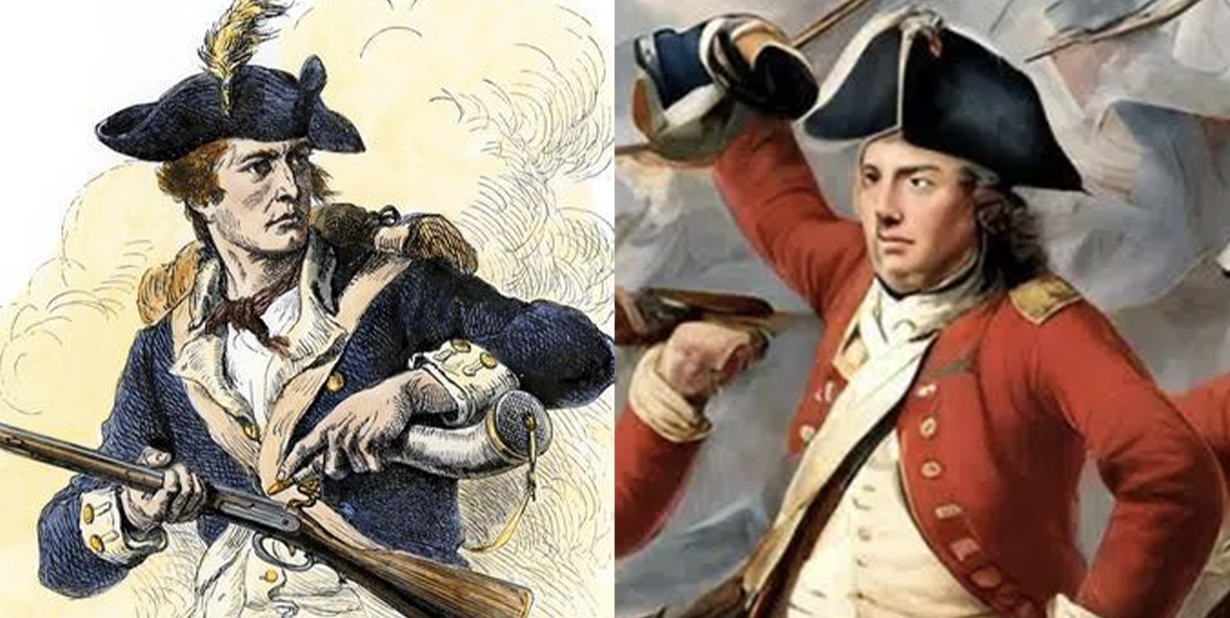
39. Greek Brotherhood
One of history’s overlooked uprisings is the Greek Revolution, which raged for 11 years between 1821 and 1832. For four centuries Greece had been under Ottoman control, even before they took Constantinople. And while conspiracy theories tend to get our eyes rolling, this was a case of genuine plotting.
A secret society called the Filiki Eteria helped to launch revolts across the country and liberate Greece for the Ottomans.
38. Birth of Capitalism
The most influential revolution of our times wasn’t an overthrow of a government, but rather the Industrial Revolution, which transformed the entire world and is responsible for introducing modern capitalism.
37. Unity Makes Strength
The Haitian Revolution of 1791 had some unexpected help.
When the uprising got started, French colonists hired mercenaries from Poland to aid them in quelling the rebellion. However, once they arrived, many of the Individuals from Poland switched their alliances and instead engaged in battle alongside the Haitians. Once the conflict ended, these individuals mostly decided to stay on the island and establish families.
Hence the surprisingly large population of ethnic Poles on the island.
36. Hold Your Keys Up
Keys can mean many different things, and for the people of Czechoslovakia, keys symbolized the opening of democracy in their country. During the Velvet Revolution, which was a peaceful overthrow of their corrupt Iron Curtain country, demonstrators took to the streets and jangled their keys in the air, ringing in a new era of democracy to Eastern Europe.
35. Seasons of the Nations
The Autumn of Nations occurred in 1989, when the countries of Central and European Europe overthrew their communist governments in a peaceful manner and led the shift to democracy across the region. Well, except for Romania, where there were unfortunate disturbances. This was in contrast to the Spring of Nations in 1848, when Europe underwent violent upheavals of their political institutions and regimes throughout the entire continent.
34. Take Out The Leader
One of Fidel Castro’s most successful tactics in the Cuban Revolution was his use of snipers to demoralize his enemies and put them on psychological tilt. Whenever President Batista's forces advanced on rebel bases, Castro directed his snipers to take out the front-runner. This resulted in none of the armed forces personnel willing to take the lead, as it was viewed as highly dangerous, thereby impeding their search for the rebels.
33. An Actual Quiet Revolution
Referendums and free elections aren’t usually synonymous with revolutions, but following the demise of Francisco Franco, Spain was able to peacefully transition into democracy through institutional arrangements without any actual attacks on their institutions.
32. A Poetic Demise
Because of the influence of ancient Greek culture on Europe, much of the continent sympathized with Greece’s rebellion against the Ottomans, and some even left their homeland to help the Greek cause. One such figure was Lord Byron, who spent time on the battlefields and notably ended his life in Greece during their revolution.

Sign up to our newsletter.
History’s most fascinating stories and darkest secrets, delivered to your inbox daily. Making distraction rewarding since 2017.
31. About That Whole Freedom Thing
African-American slaves served both parties during the Revolutionary conflict. Some ran away from their masters and joined the British in order to fight against the slave owners, while others were recruited by the American Army after George Washington lifted the ban which had originally prevented them from doing so.
In reward for serving in the Army, slaves were promised their freedom afterward, however many of them were simply sent back to their masters afterward.
30. About That Revolution
Just because the Philippines had a revolution and declared their independence doesn’t mean that it actually worked out in the end. Instead, the Spanish conceded to the United States that they could now go in and take over, which is exactly what the US did, ruling for 50 years in the country that had just won their independence.
29. Proxy Conflict
Sometimes a revolution isn't solely internal, but is also influenced by external factors, as happened during the Nicaraguan Revolution from 1962 to 1980. During this period, the country effectively became a stage for surrogate conflicts between the Soviets and Americans at the height of the Cold Conflict.
28. Spy Lady
The Culper Ring was the espionage network of colonists that supported the Americans during the Revolutionary conflict and had a significant influence.
The ring was able to discover the treason of Benedict Arnold due to the efforts of Agent 335, one of the most famous, yet still anonymous spies of the ring. The number 335 is decoded to mean Lady, so all that we know is that the Agent was a woman living in New York City, with a high degree of social prominence.
27. The Legend of Valley Forge
The Battle of Valley Forge is a significant episode in American folklore. This significance is attributed to schools and history books illustrating how brave individuals endured a harshest winter, succumbing to starvation and extreme cold in ragged attire, all with unwavering dedication to the American Revolution. However, archaeological digs now show that there are no grave sites in Valley Forge, and historians date the legend of Valley Forge to the 19th century.
In reality, the American personnel weren't the disjointed team we've been conditioned to believe they were.
26. Living Together
When many people look at the Middle East, they believe that the factions of religions there are always at each other's throats. However, this is a huge misconception, as most of the populations there are peaceful.
During the Egyptian Revolution of 2011, Muslims, Christians, Coptic Christians, and secular Egyptians all had each other’s back and maintained solidarity. Many Christian protesters even formed human shields around Islamic people to protect them while they prayed.
25. The Hand of Egypt
The Armed Forces played a significant role in the Egyptian Revolution, accountable for the disappearance of thousands of people, and an estimated 1,200 fatalities.
Documents show that they rounded people up, tortured them, and had mass executions of prisoners during the Revolution and its aftermath.
24. Social Media Help
The Arab Spring and it’s subsequent revolutions used the internet as a way to help them stir up support for political changes in their region. Social media sites like Facebook and Twitter were vital to their efforts, as they were used to organize and lead a revolt against their corrupt governments.
23. Google It
Libya didn’t just rely on social media, however, as the rebels there turned to Google Earth to help them fight against Muammar Gaddafi. They would store their locations on Google Earth, and then send them to NATO so that they could then direct airstrikes to the pinned locations.
22. Call of Libya
Libyan rebels didn’t just use Google Earth. They leaned on the video game Call of Duty for their tactical approach to rebellion. According to sources, the game was their primary and most essential source of combat-related knowledge.
21. You Are What You Eat
During the Revolutionary conflict against the British, the Americans held an advantage of more than several inches in height.
This is attributed to the development of a healthier lifestyle than the British, as the lands of the Americas were full of healthy soil for vegetation and plenty of lands to keep grazing animals.
20. Not So Bloodless
The Glorious Revolution of 1688 set up the Bill of Rights in Britain and cleared the way for parliamentary democracy in the country.
It is often referred to as the Bloodless Revolution, however, this is a misnomer. There were violent clashes in England and Scotland, as well as major battles in Ireland, as well as anti-Catholic riots going on throughout.
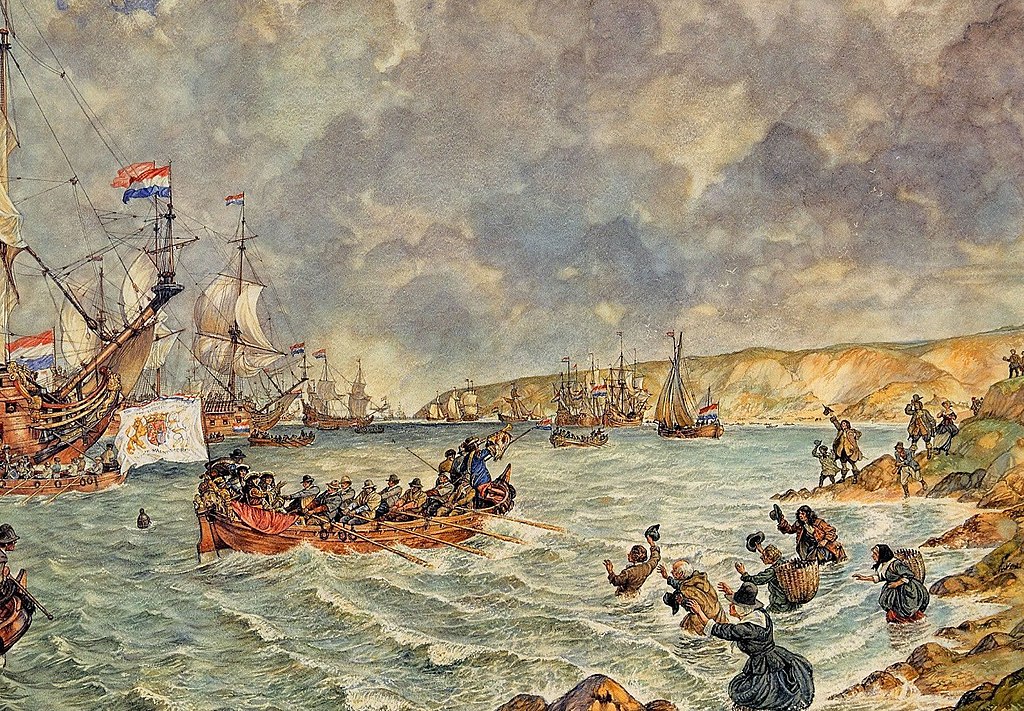 Hoynck van Papendrecht, Wikimedia Commons
Hoynck van Papendrecht, Wikimedia Commons
19. Dutch Invasion
Actually, the Glorious Revolution is now looked at by historians as a successful invasion by the Dutch and William of Orange.
This had been overlooked until the 1990s, due to an Anglo-centric approach by most scholars, who could not and did not consult the Dutch records at the time.
18. Further Than Revere
Paul Revere, Paul Revere—yeah, we’ve all heard about all he did to warn the Americans that the British were coming, but what about Sybil Ludington? Revere covered 20 miles with others prior to his capture.
Yet, two years following, 16-year-old Ludington set off by herself in the middle of the night, journeying 40 miles through outlaw territory to assemble American forces for participation in the Battle of Danbury.
17. Cheers…?
Making a toast in Hungary might be the best idea if you’re visiting Budapest this summer. In 1848, Hungary launched the Hungarian Revolution against the Austrians, which ultimately failed.
The Austrians celebrated in their predictable manner, by raising a toast, indulging in some beverages, and carrying out the execution of all the Hungarian generals.
16. Highest Number of Fatalities
The Taiping Rebellion is responsible for the highest amount of humans lost during a revolution, as the average estimation of deaths is 22,360,680, while other estimations suggest the toll to be closer to 100 million people.
15. Girl Troubles
Emiliano Zapata, the leader of the peasant revolution in the state of Morelos and facilitator of the Mexican Revolution, is said to have first gotten involved in the revolutionary struggle in Mexico after stealing a girl.
14. Robin Hood Zapata
Zapata believed in land reform, and his movement was led under the slogan of Tierra y Libertad (Land and Liberty).
Zapatistas believed that land does not belong to those disconnected from it, but rather it should belong to those who work on it. This led his Guerrilla Army of peasants to go on a crusade of taking land from the wealthy and redistributing it back to the poor.
13. True Quote Origins
By now we've all heard the quote, "I'd rather cease to exist standing up, than continue to exist kneeling down," but do you know who said it? Numerous leaders from Che Guevara to Aeschylus have been credited with this saying, but in reality, it originated from Emiliano Zapata during the Mexican Revolution.
He famously asserted, "I prefer to perish on my feet than live on my knees".
12. Leaders Felled
Revolution is a bloody business, and no matter your role in it, there is no guarantee that you’ll make it out alive. Almost every principal figure of the Mexican Revolution, such as Emiliano Zapata, Pancho Villa, Francisco Madero, Victoriano Huerta, and Alvaro Obregon, tragically lost their lives due to violent incidents.
11. Helping Hand
American combatants of the American Revolution weren't trained in using the bayonet and instead resorted to using the swords at the end of their guns as skewers for cooking meat over open fires. It wasn’t until the training of Prussian General Friedrich Wilhelm von Steuben that the American Army was able to properly wield the bayonet, which made them into an unstoppable force.
10. Native Enemies
Due to the Native American Seneca tribe forming an alliance with the British during the American Revolutionary conflict, following the British loss, they had to relinquish their territories to the newly formed United States of America.
They fought alongside the Iroquois, who made up an even bigger faction of the British allies.
9. Frontier to Tribe
While the Seneca were negotiating the sale of their land, Mary Jemison proved to be a vital negotiator. She was an American frontierswoman who assimilated into the tribe after being captured as a teenager, and refused to return back to colonial culture as she got older.
8. French Casualties
Despite the challenging context of the American Revolutionary era, it's surprising to note that the French actually lost more personnel in battle than the Americans.
7. German Recruits
Given the lack of interest in the Army as a profession in Britain, outside mercenaries were called upon to strengthen their forces during their clash with America.
First, they were unsuccessful in securing 20,000 mercenaries from Russia and later had to engage in treaty discussions with various German states to obtain mercenary forces from them. The fact that they lacked any major allies was not beneficial either.
6. Jasmine Flowers
Tunisia’s part in the Arab Spring was the Jasmine Revolution, named after their national flower. The revolution was sparked when a 28-year-old fruit and vegetable vendor named Mohamed "Basboose" Bouazizi approached the city hall in his town and set himself alight in protest against Tunisia's corrupt law enforcement system.
5. Faith, Hope, Charity, Revolution
Another secret society that facilitated a revolution was the Katipunan, a Filipino nationalist organization created by a group of Freemasons.
They organized a massive amount of resistance to the Spanish, and after they abandoned their secrecy, they were able to steer the Philippine Revolutionary Army to victory over the Spanish in 1898. They also signed all of their documents in blood. Oh, and they're known in the Philippines as the KKK.
4. Lightning Strikes
James Otis was an early Patriot proponent for rebellion against the British, and he coined the term "Taxation without representation is tyranny," which significantly fueled the revolutionary sentiment in the colonies. Otis lost his life in the midst of the conflict in 1783 after being struck by lightning.
That might sound like an awful way to go, but Otis had previously told his sister that he had hoped to go out by “a flash of lightning".
3. Can’t Get The Shot Back
One of the greatest overlooked chances in history occurred during the American Revolution. During the Revolutionary conflict, early methods of tactics and engagement were established.
Particularly at the Battle of Brandywine, British Captain Patrick Ferguson had the chance to directly confront an American officer. However, he held himself back, as the officer had his back turned. Shortly afterward he regretted his decision, as he found out that officer was none other than General George Washington.
2. Brother of Christ
The leader of the Taiping Rebellion against the Qing Dynasty, Hong Xiuquan, launched his rebellion—which would end up as one of the bloodiest eras in the history of the world—after he came to the realization that he was the younger brother of Jesus Christ. He claimed to be the “Heavenly King,” sent to China to rid the country of devils.
1. Tear It Down
The Storming of the Bastille is the moment when the match hit the fuel in France, and the French Revolution was set in motion, but the moment takes on a new level of badass when you learn that the people tore down the fortress by hand, brick by brick, as they didn’t have any explosives on them.
Sources:


